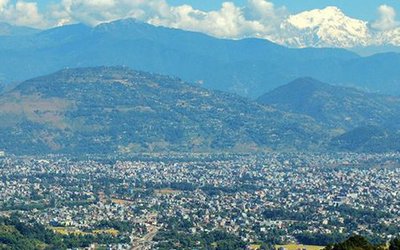Acute mountain sickness ( AMS) is a common problem at high altitude ( > 2500m) and usually presents with headache and nausea. Although it is best to prevent AMS by gradual ascent without using any drugs,this may not always be an option in many settings.
Rescuers may need to go up rapidly to high altitudes;or logistically, owing to a lack of camp site, it may notbe possible for trekkers and climbers to spend the nightat an optimal altitude. Furthermore, airports in placeslike Lhasa, Tibet (3,490 m) and La Paz, Bolivia (4,058m) may cause travelers to arrive at high altitude withoutthe ability to acclimatize en route. Many,such as pilgrims, often disregard strongly deliveredadvice about gradual ascent in their single-mindeddetermination to reach the sacred site. In addition sudden military deployment tohigh altitude regions of the world, such as the HinduKush mountains in Afghanistan, may necessitate drugprophylaxis for the prevention of AMS. Finally there is a fast-growing population of climbers in pursuit of a summit who are incorrectly being advised by physicians to use prophylactic medicine to both improve performance and achieve summit success.
Updated knowledge about the most commonly used drug Diamox ( acetazolamide) for the prevention of AMSis helpful. Recently there has been a significant change in its dose recommendation.
In a publication in the British Medical Journal in2000,Dumont and colleagues had arbitrarily shown thatonly 750 mg/day ofdiamox(acetazolamide) would prevent AMS.
Recent review articles, which now include studies post 2000(many of which were conducted by us in the Himalayas),have clearly shown that a much lowerdose (250 mg/day) of diamoxis adequate for prevention.Other drugs including ginkobiloba and ibuprofen have beentested in the prevention of AMS. But diamoxcontinues to be the superior drugdue to its proven efficacy over the years in a largenumber of trials with an acceptable side-effect profile.
Another important use of diamox in themountains is in the prevention of periodic breathing (literally, trying to “catch your breath” while sleeping)at high altitude. This is a very common problem whichsometimes triggers anxiety attacks. Diamox decreases the hypoxemic (low oxygen) spells during sleep andsuccessfully treats this problem in most instances.
Whenever a drug is prescribed it is important to know what the side effects are. Diamox does have an acceptable side-effect profile but an important side effect is” jhumjhum” or tingling and burning in the fingers and toes. This is not serious but for many this is very distressing. Using lower doses of Diamox does help to decrease this sensation. (Also note, “jhumjhum” sounds a lot better than tingling and burning. “Jhumjhum” is a good example of Nepali alliteration). Another side effect of diamox is that beer and other carbonated beverages taste flat as the action of the drug ( carbonic anhydrase inhibition) is also present in the tongue which causes this flat taste. Finally, Diamox is a sulpha based drug and anyone who has had a serious allergy using sulphas is strongly cautioned against using this drug.
In conclusion, sojourners ascending high altitudeneed to be encouraged to go up gradually withoutthe use of drugs, including diamox toenhance acclimatization. However, in certain instances,chemoprophylaxis may be useful. In those cases, low-dose( 250 mg\day)diamoxis the drug of choice.

Buddha Basnyat MD
Buddha Basnyat, MD, MSc, FACP, FRCP, Director of the Oxford University Clinical Research Unit-Patan Academy of Health Sciences, Kathmandu.
- Altitude Sickness
- Feb 20, 2018
- Post-earthquake Nepal: The Way Forward
- Dec 13, 2015
- The Annapurna Sanctuary
- Nov 29, 2015
- Diarrhea at the Summit
- Nov 08, 2015
- Altitude Sickness ( AMS, HAPE, HACE)
- Oct 15, 2015
















